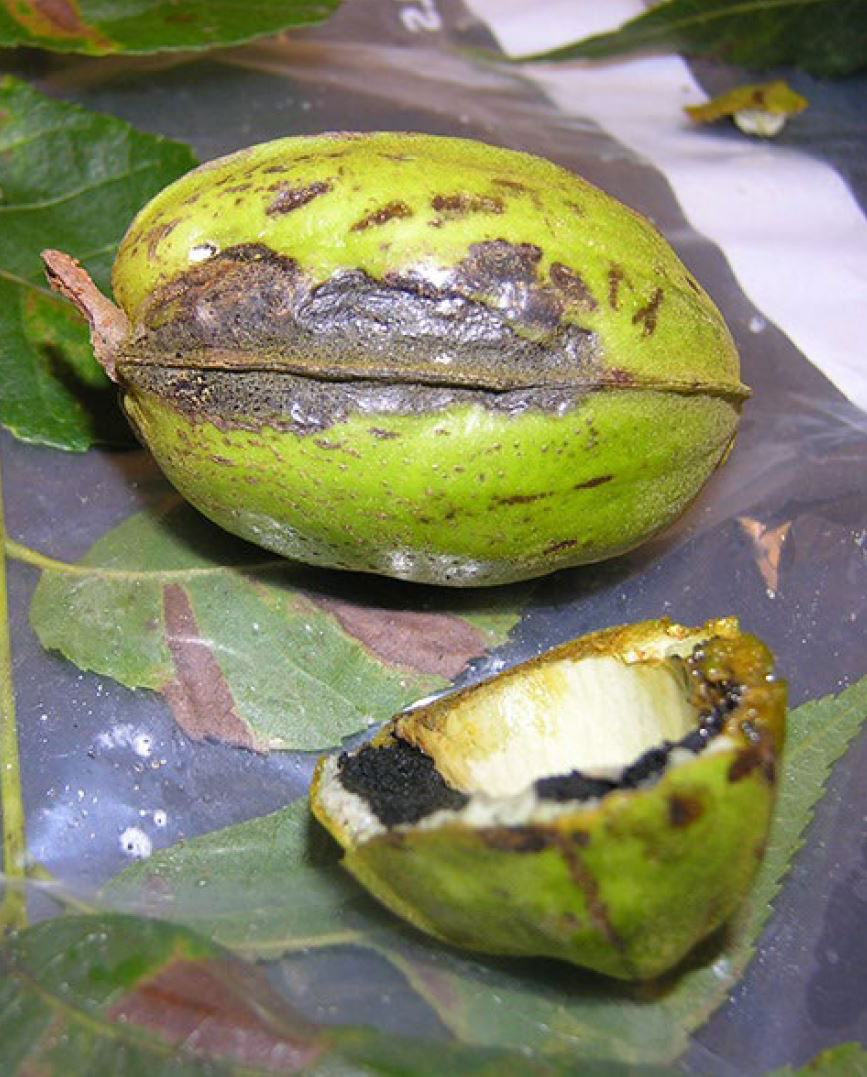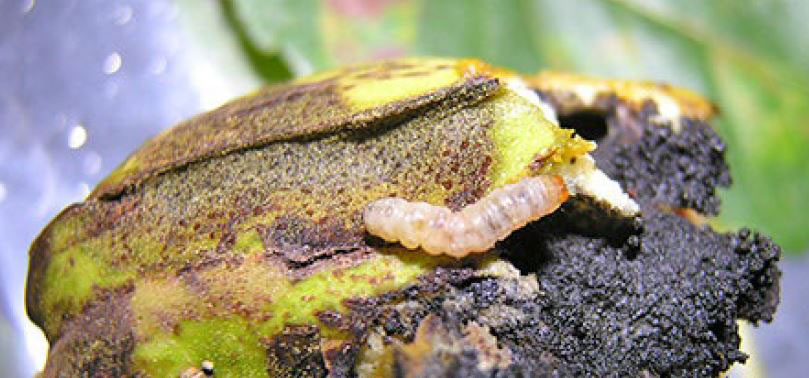Hickory/Pecan Shuck Worm
Contact
Plant Diagnostician
Phone: (479) 575-2727
Email: ssmith@uada.edu
Jason Pavel
Diagnostician
Phone: (479) 575-7257
Email: jpavel@uada.edu
Office:
University of Arkansas System Division of Agriculture
Cralley Warren Building
Room 16
2601 N. Young Ave.
Fayetteville, AR 72704
Hickory Shuck Worm in Pecan
Plant Health Clinic Disease Note Issue 33
Sherrie Smith and Jason Pavel

The larvae of the hickory shuck worm, Cydia caryana, can cause significant damage and yield loss to pecan crops. The adult is a nocturnal inconspicuous small gray to smoky black moth approximately 3/8 inch long with a ½-inch wingspan. Adult moths emerge from the previous year’s shucks in the spring, mate, and lay eggs on newly developing pecan or hickory nutlets, or phylloxera galls.
What are the symptoms of hickory shuck worm feeding in pecans?
Their feeding activity causes the little pecans to drop. The second-generation feeds on larger nuts, also causing premature nut drop. The third generation does the most damage, mining the nuts, reducing nut fill, and causing the shucks to cling to the shell.
How do I prevent hickory shuck worm in pecans?
Raking up fallen nuts in the fall helps to control overwintering shuck worms. Trees should be sprayed at half-shell hardening and repeated at 2-week intervals until shuck split. Asana XL, Belt, Dimilin 2F, Intrepid 2 F, Mustang Max, Spin Tor, warrior, and Entrust are labeled for control.

Take Aways:
• Rake up all fallen nuts and burn or dispose off the property.
• Spray at half-shell hardening.
• Repeat at 2-week intervals.
Follow us on Facebook!
This work is supported by the Crop Protection and Pest Management Program [grant no. 2017-70006- 27279/project accession no. 1013890] from the USDA National Institute of Food and Agriculture